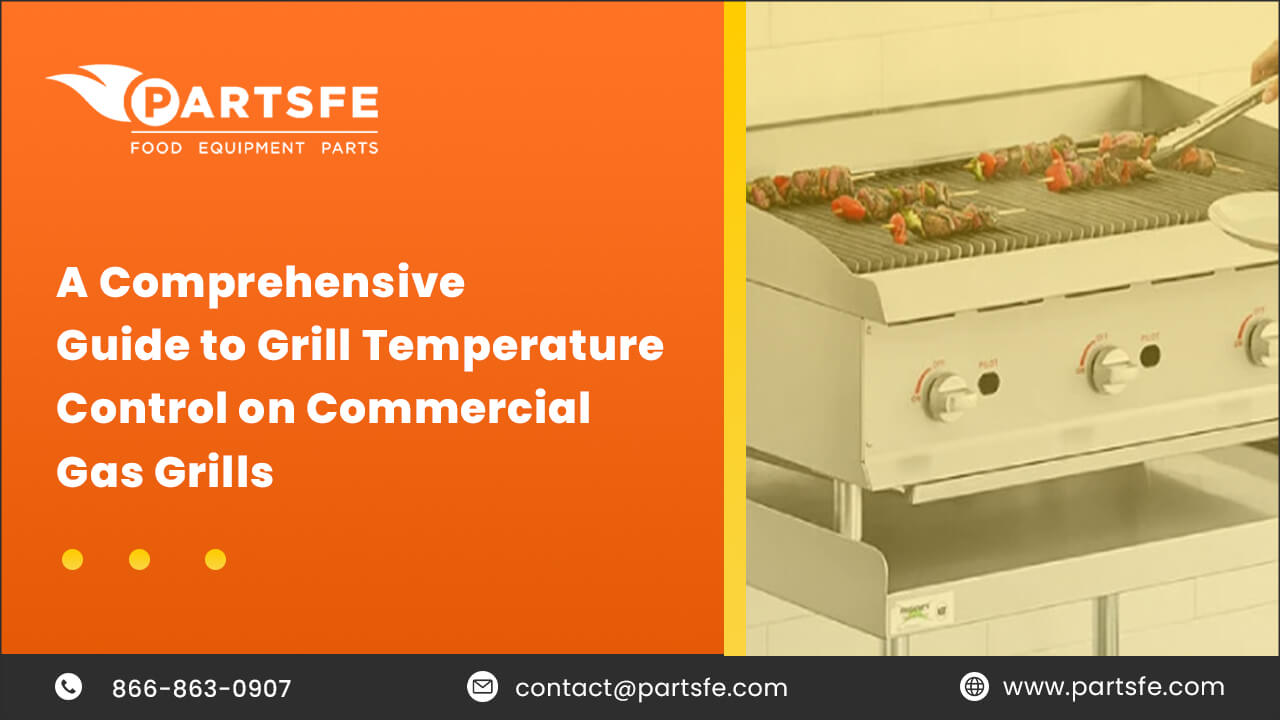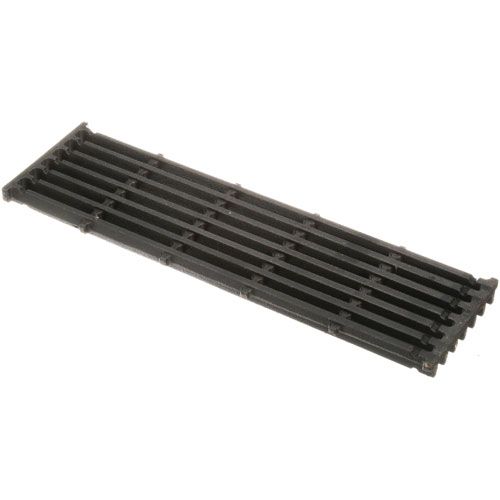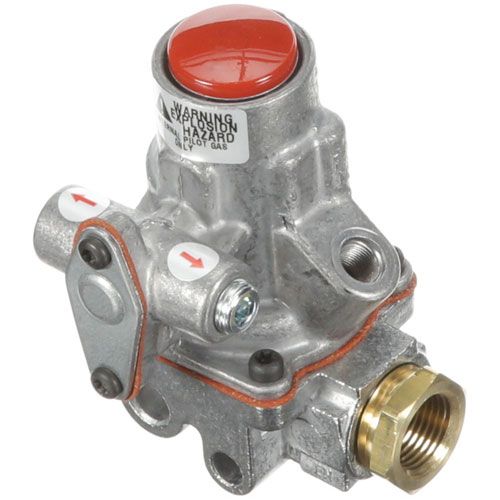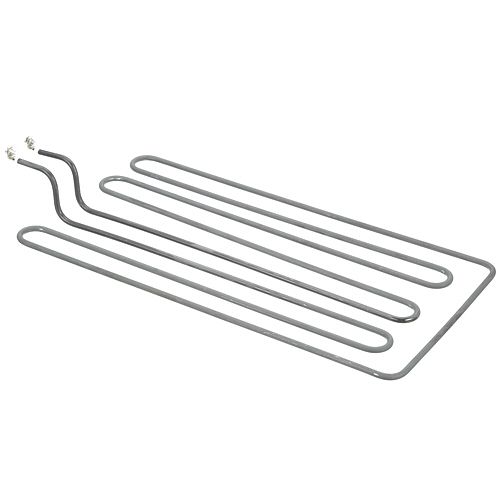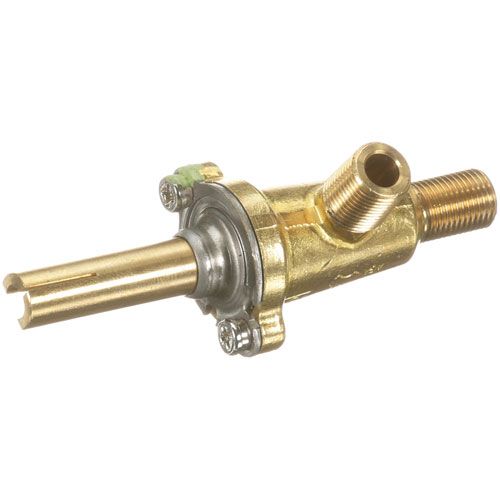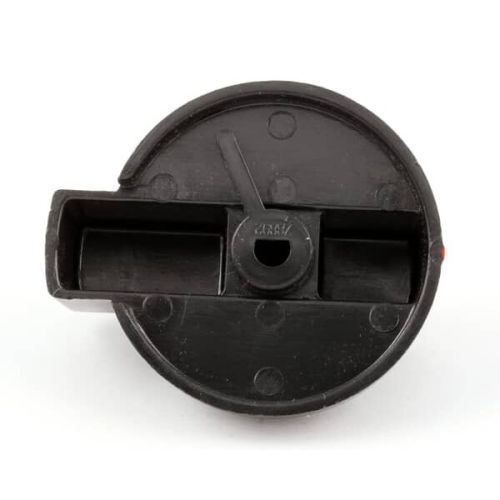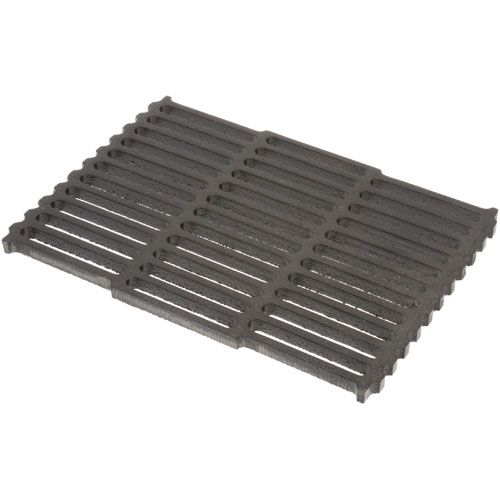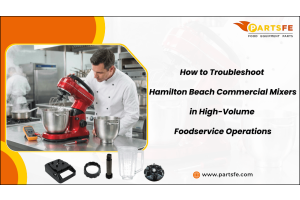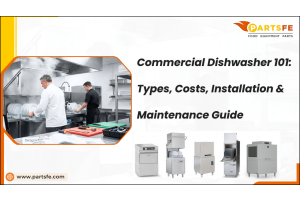A Comprehensive Guide to Grill Temperature Control on Commercial Gas Grills
Temperature control grill is critical to achieving consistent and quality results in commercial gas grills. Maintaining precise temperatures ensures the perfection of grilled dishes and impacts cooking efficiency, fuel economy, and customer satisfaction. The grill temperature controller is indispensable for delivering a seamless culinary experience, enhancing the taste and texture of grilled foods, optimizing cooking processes, and ultimately driving business success. Understanding and gas grill with temperature control is fundamental for any establishment that relies on gas grill parts for its culinary operations.
|
Table of contents: |
Importance of temperature control in commercial gas grills
Temperature control in commercial gas grills plays a vital role in ensuring the consistency and quality of grilled dishes. Precise temperature management is essential for even and thorough cooking, contributing to the taste and presentation of the final products. Efficient temperature control not only enhances cooking processes but also promotes fuel economy by minimizing energy waste. Additionally, maintaining optimal temperatures is crucial for the safety of kitchen staff and patrons, reducing the risk of foodborne illnesses. Culinary versatility is also enhanced through proper temperature controllers, allowing chefs to execute a diverse range of recipes and cooking techniques to meet the expectations of a varied customer base.
Components and features of commercial gas grills
- Construction materials: Commercial gas grills are typically constructed with durable materials such as stainless steel to withstand heavy usage and high temperatures.
- Size and cooking area: Commercial gas grills are larger and feature a more expansive cooking area to accommodate higher volumes of food compared to residential grills.
- BTU output: Commercial gas grills have significantly higher BTU output to provide the intense heat necessary to cook large quantities of food quickly and efficiently.
- Multiple burners: They often feature multiple burners to enable independent temperature control in different cooking zones, allowing for versatile cooking capabilities.
- Advanced cooking features: Commercial gas grills may include special features such as infrared burners, rotisserie systems, and smoke boxes to enhance cooking versatility and quality.
- Durability: Commercial gas grills are designed for heavy-duty use, featuring robust components and construction to handle the demands of a professional kitchen environment.
- Temperature control: Precise gas grill temperature control systems are incorporated to maintain consistent cooking temperatures, crucial for high-volume cooking operations.
Differences between commercial and residential gas grills
|
Aspect |
Commercial Gas Grills |
Residential Gas Grills |
|
Size and capacity |
Significantly larger with higher cooking capacity |
Smaller size with lower cooking capacity |
|
Construction and durability |
Heavy-duty materials for continuous use |
Lighter materials for occasional use |
|
Heat output |
Higher BTU output for professional cooking demands |
Lower BTU output suitable for domestic use |
|
Features and accessories |
Advanced features like multiple burners and infrared options |
Basic features for standard grilling needs |
|
Regulatory compliance |
Must meet strict safety and sanitation regulations |
Regulations not as stringent |
|
Price and maintenance |
More expensive with professional installation required |
More affordable and easier to maintain |
Refer: The Best Grill Grates To Fit Your Budget And Basic Grilling Needs
Grill temperature control essential techniques and methods
Accurate temperature monitoring is essential for achieving consistent cooking results, ensuring food safety, and enhancing the overall culinary experience. Maintaining precise temperatures allows chefs to control the doneness of food, prevent undercooking or overcooking, and achieve optimal flavor profiles. In commercial settings, accurate temperature monitoring is critical for meeting health and safety regulations, ensuring food quality, and upholding customer satisfaction.
Factors affecting grill temperature
- Burner size: The size and power of the burners directly impact the grill's temperature capabilities. Larger burners generate more heat, allowing for higher cooking temperatures.
- Fuel flow: The rate at which fuel is supplied to the burners determines the intensity of the flame and, consequently, the grill temperature. Proper fuel flow control is essential for maintaining consistent heat levels.
- Ventilation: Adequate ventilation is crucial for regulating grill temperature. Proper airflow helps prevent heat buildup, ensures even cooking, and promotes fuel efficiency.
Methods for measuring grill temperature
- Thermometers: Probe thermometers inserted into the grill provide accurate temperature readings at various cooking zones. Digital thermometers offer quick and precise measurements, allowing for real-time temperature adjustments.
- Infrared sensors: Infrared thermometers measure surface temperatures without direct contact, making them ideal for quickly assessing grill temperature distribution.
- Grill dome thermometers: Built-in grill dome thermometers monitor the grill's internal temperature, providing a general indication of the cooking environment's heat level.
Tips for fine-tuning temperature adjustments
- Monitoring and adjusting: Use a reliable thermometer to monitor the grill's temperature and make precise adjustments as needed, ensuring the desired heat levels are consistently maintained.
- Preheating: Allow the grill to preheat thoroughly before cooking. This process ensures that all cooking zones reach the intended temperatures before placing the food on the grates.
- Placement of food: Position food items over the appropriate heat zones based on their specific cooking requirements. For example, sear proteins over direct heat and then transfer them to the indirect heat zone for finishing to the desired internal temperature.
- Lid management: Open or close the grill's lid to adjust the heat and control airflow. Closing the lid traps heat and helps regulate the overall cooking temperature.
- Adjusting grill temperature: Use burner knobs or dials to control heat output
- Single zone grilling: Adjust the burner knobs or dials to regulate the heat output for a single temperature zone across the entire grill surface. Turning the knobs clockwise increases the flame and heat, while turning them counterclockwise decreases the heat output.
- Dual-zone grilling: For grills with multiple burners, adjust the burner knobs to create two distinct temperature zones. One zone is set to high heat for searing, while the other is set to a lower heat for more gentle cooking, offering versatile cooking options for different ingredients.
Temperature control techniques and strategies for commercial gas grills
Here are the advanced gas grill control techniques:
- Altitude: Higher altitudes typically have lower atmospheric pressure, affecting the combustion process and subsequently the grill's temperature. At higher altitudes, gas grills might require adjustments to compensate for the lower oxygen levels and achieve optimal heat output.
- Weather conditions: Temperature, humidity, and wind can impact the grill's performance. Wind can accelerate heat loss and uneven heat distribution, while colder ambient temperatures may require longer heating elements and adjustments to compensate for heat loss during the cooking process.
- Ambient temperature: Warmer ambient temperatures can affect the grill's efficiency, often necessitating adjustments to the burner settings to account for the additional heat from the environment.
|
Technique |
Description |
|
Smoking technique |
Utilize a smoke box or smoker tube filled with wood chips on a gas grill. Place it over a lit burner to generate smoke, adjusting the burner for temperature. |
|
Low-and-slow cooking |
Adjust burners to create an indirect heat zone for gentle, slow cooking at lower temperatures on a gas grill. Ideal for tenderizing tougher cuts of meat. |
|
Experimenting with fuel |
Experiment with different types of wood chips and pellets for added flavor and temperature control on the gas grill. |
|
Experimenting with grill |
Adjust burner positioning and use heat diffusers or deflectors for precise heat distribution and cooking control on the gas grill. |
Checkout: How To Clean Grill Grates: 4 Effective Methods
Troubleshooting temperature and burner issues with your gas grill
Identifying and addressing common temperature problems
- Hot spots: Identify hot spots by observing uneven cooking patterns or using grill surface thermometers. Address hot spots by adjusting burner settings, repositioning the food, or using heat diffuser plates to distribute heat more evenly.
- Cold spots: Cold spots, often caused by insufficient gas flow or burner issues, can lead to undercooked food. Rotate or reposition food to ensure even cooking, and inspect and clean burners to address these cold spots.
- Fluctuating temperatures: Fluctuating temperatures might result from fuel flow irregularities, burner blockages, or ventilation issues. Verify proper gas supply and check for obstructions in burners, hoses, and valves. Clear any blockages to ensure consistent heat output.
- Tips for troubleshooting gas flow issues and burner problems
- Gas flow issues: Inspect the gas supply, gas grill regulator, hoses, and connections for leaks or damage. Ensure the gas supply is open and unrestricted, and replace any damaged components to restore proper gas flow.
- Burner problems: Clean the burners regularly to prevent clogs caused by grease and debris buildup. If burners are not igniting or are producing irregular flames, check for obstructions and clean or replace damaged burners as needed.
Mastering grill temperature control on commercial portable gas grills can truly elevate the art of cooking. From understanding the impact of altitude and weather on grill performance to experimenting with smoking techniques and fine-tuning temperature adjustments, chefs can harness the power of precise temperature control to create culinary masterpieces. By troubleshooting common temperature issues, addressing gas flow problems, and knowing when to seek professional assistance, chefs can ensure consistent and exceptional cooking results on their commercial gas grills.
With a deep understanding of temperature control principles, advanced techniques, and troubleshooting methods, chefs can unlock a world of possibilities in their culinary creations. By wielding temperature control as a precision tool, chefs can turn every dish into a masterpiece and every meal into a memorable experience.
FAQs
Why is grill temperature control important in commercial settings?
Grill temperature control is important in commercial settings to ensure consistent cooking results, meet health and safety regulations, and uphold food quality and customer satisfaction.
How does accurate temperature monitoring contribute to food safety on commercial portable gas grills?
Accurate temperature monitoring contributes to food safety on commercial outdoor grills by ensuring that food is cooked to the recommended safe internal temperatures, effectively eliminating harmful bacteria and pathogens.
What factors should commercial chefs consider when adjusting grill temperature for different types of food?
Commercial chefs should consider the type of food, desired doneness, cooking methods (direct heat, indirect heat), and the grill's heat distribution when adjusting grill temperature for different types of food.
Can grill temperature control impact cooking times and food quality in commercial kitchens?
Grill temperature control can significantly impact cooking times and food quality in commercial kitchens by influencing the doneness, texture, juiciness, and flavor of the cooked food.

